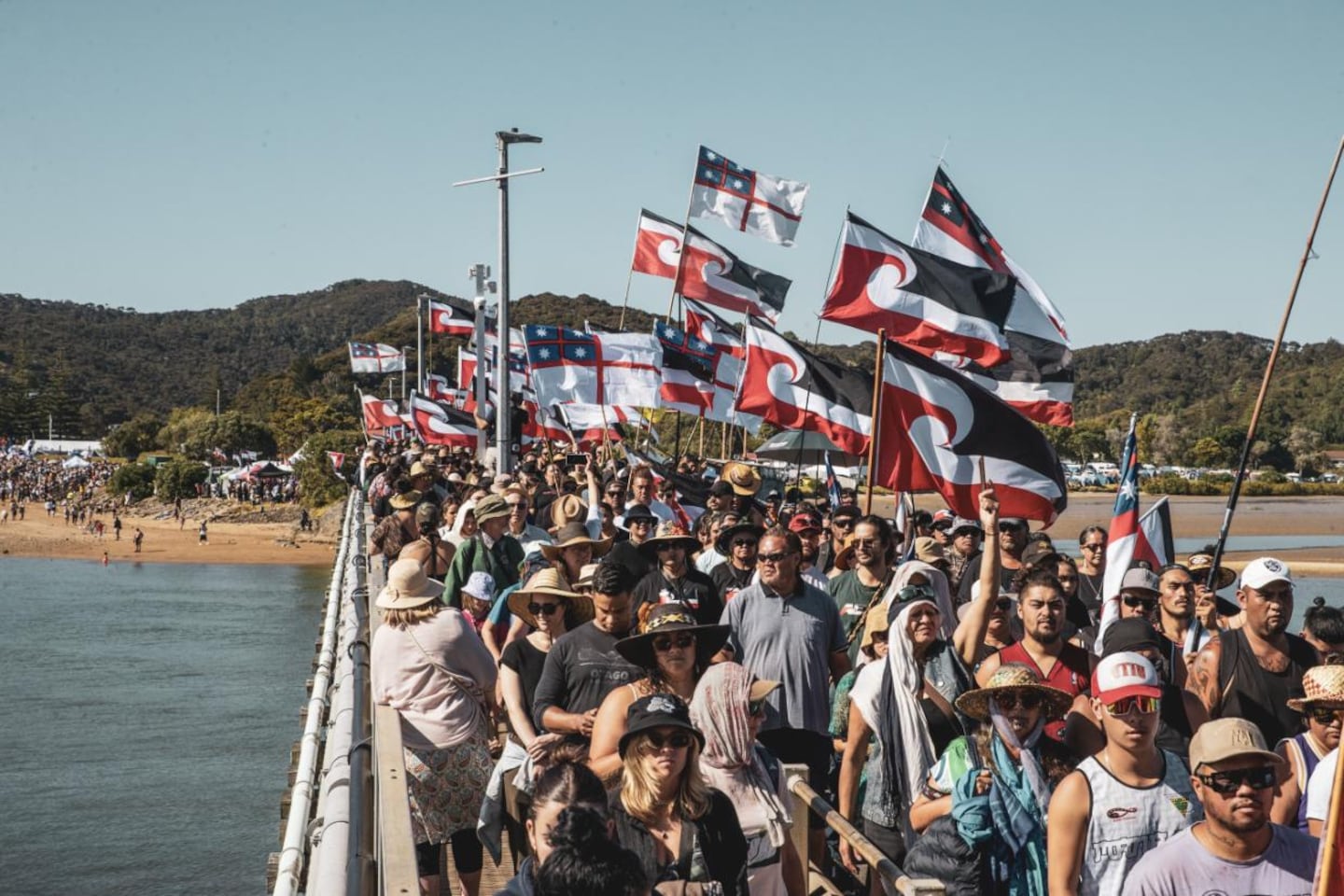This article was first published by Stuff.
On Sunday the Hīkoi mō te Tiriti launches nine jam-packed days of convoys and events, interacting with tens of thousands of supporters, culminating in a visit to Parliament. It aims to protect a Treaty that organisers say is under threat.
This is kinda following in the footsteps of Dame Whina Cooper, right?
Yeah - nice spotting.
In 1975, the 79-year-old kuia led a land march from the Far North to Parliament. That hīkoi lasted a month, its impact has lasted decades and is still felt - it helped spark the creation of the Waitangi Tribunal.
The current hīkoi is a more “straight up the guts” approach, as one of the organisers, Eru Kapa-Kingi says, with a shorter timeline. Their goal is to protect the Te Tiriti o Waitangi/Treaty of Waitangi.
But I like the Treaty, what’s going to happen to it?
That’s an interesting question, and also a wee bit of a touchy subject.
ACT leader David Seymour says nothing is going to happen to the actual Treaty. In its coalition deal, ACT won National’s support through the public consultation stage of lawmaking, for a Treaty Principles Bill. It could eventually replace the many existing principles - how we interpret the Treaty’s intentions - with a trimmed-down offering of three. The goal is equality before the law.
The Waitangi Tribunal (Ngā mihi nunui, Dame Whina!) says the bill could end the partnership between the Crown and Māori, and the Treaty itself. After all, the document lives and breathes through how it is applied (literally those principles, developed over decades in courts, the government, and the tribunal).
Hey - hasn’t that bill already been introduced in Parliament?
Yeah, the hīkoi was going to roll into Parliament grounds on the previously signalled date for the bill’s introduction, but the introduction was pushed forward. The government says the date change had nothing to do with the hīkoi. This might just encourage (a polite word for “rark-up”) more people into joining the activation at Parliament on November 19.
Whoa, heavy stuff. So this hīkoi is kind of like a rock tour, but with saving the Treaty as its greatest hit?
Now you’re being silly. It is essentially a series of events, stops and convoys - a morning karakia at this marae, a convoy on that motorway, a rally or activation at this landmark - with the aforementioned goal of Treaty preservation.
Do you have to be Māori to join in?
Hell no.
What is an activation, and how will I be activated?
Yes, that’s a word that is used by the hīkoi organisers for public rallies along the tour. I can’t tell you whether you might want to be activated, just follow your heart, I guess. But you can find the planned movements and events of the hīkoi here.
Why is this all such a big deal for people?
Ahh, yes - good old context. This hīkoi comes at a time of fraught government, Māori relationships.
There are at least two viewpoints on how the coalition government has been working for New Zealand. At the National Party conference in August, Prime Minister Christopher Luxon said they had promised to get New Zealand back on track, and that was exactly what they were doing. The National-led government had gotten results on things like inflation, crime and reckless spending, he said.
Many Māori, on the other hand, think the government has been spectacularly backward-looking, and they point to things like the Māori wards law, booting reo Māori to second spot on government department names, cancelling the Māori Health Authority, and of course, this Treaty Principles Bill. I think it’s fair to say Māori feel like they’re being singled out.
Results, I guess, are in the eye of the beholder.
I couldn’t really comment.
- Stuff



